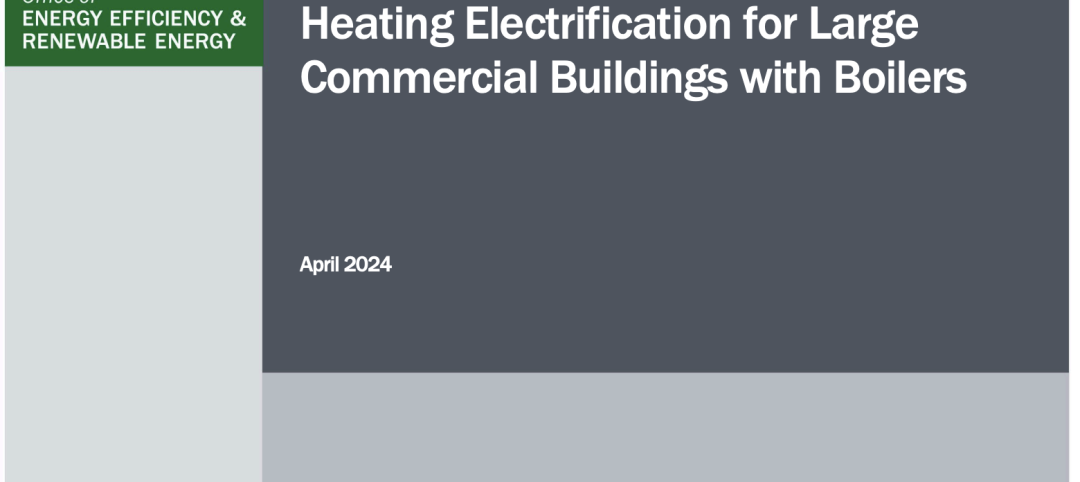The American Concrete Institute (ACI) has released the Spanish edition of ACI 318-14: Building Code Requirements for Structural Concrete.
The 2015 International Building Code references 318-14. A Spanish language inch-pound version has also been released. The reorganized 318-14 is structured from an engineer’s perspective.
By focusing on member design, ACI 318 requirements flow more intuitively and have fewer cross-references, ACI says. The document has greater ease of use; improved logic and flow of information; member-based organization to quickly locate relevant code information; and construction requirements centralized in one chapter.
Publication of ACI 318-14 is the first major reorganization of ACI 318 since 1971 and represents nearly a decade of work. Updates include new chapters on structural systems and diaphragms, and a consistent structure for each member chapter. The U.S. and more than 22 countries around the world base their national building codes on all or part of ACI 318, and the document is used globally.
(http://www.concrete.org/News/NewsDetail.aspx?f=51687651)
New York City last year adopted the National Institute of Standards and Technology (NIST) recommendation to require additional exit stairways in high-rise buildings.
Since stairwells count as part of a building’s floor, an amendment to the city’s Zoning Resolution is also required and city government is considering the measure. The amendment exempts space used for the additional emergency stairwells from counting toward zoning floor area in new, non-residential buildings 420 feet high or taller.
The International Building Code (IBC) adopted the NIST’s findings in 2009, following a review of high-rise safety after the terrorist attacks of Sept. 11, 2001. A major recommendation was to increase exit capacity of buildings with additional exit pathways.
The zoning measure applies primarily to office buildings and hotels in Midtown and Lower Manhattan, Downtown Brooklyn, and Long Island City, Queens. The 11 community boards in those neighborhoods and borough presidents in Manhattan, Brooklyn, and Queens have 60 days to review the amendment, followed by reviews at the City Planning Commission and the City Council.
(http://www.qgazette.com/news/2015-01-07/Features/Making_Tall_Buildings_Safer.html)
Related Stories
MFPRO+ News | May 24, 2024
Austin, Texas, outlaws windowless bedrooms
Austin, Texas will no longer allow developers to build windowless bedrooms. For at least two decades, the city had permitted developers to build thousands of windowless bedrooms.
Resiliency | May 24, 2024
As temperatures underground rise, so do risks to commercial buildings
Heat created by underground structures is increasing the risk of damage to buildings, recent studies have found. Basements, train tunnels, sewers, and other underground systems are making the ground around them warmer, which causes soil, sand, clay and silt to shift, settle, contract, and expand.
MFPRO+ News | May 21, 2024
Massachusetts governor launches advocacy group to push for more housing
Massachusetts’ Gov. Maura Healey and Lt. Gov. Kim Driscoll have taken the unusual step of setting up a nonprofit to advocate for pro-housing efforts at the local level. One Commonwealth Inc., will work to provide political and financial support for local housing initiatives, a key pillar of the governor’s agenda.
Building Tech | May 21, 2024
In a world first, load-bearing concrete walls built with a 3D printer
A Germany-based construction engineering company says it has constructed the world’s first load-bearing concrete walls built with a 3D printer. Züblin built a new warehouse from a single 3D print for Strabag Baumaschinentechnik International in Stuttgart, Germany using a Putzmeister 3D printer.
MFPRO+ News | May 20, 2024
Florida condo market roiled by structural safety standards law
A Florida law enacted after the Surfside condo tower collapse is causing turmoil in the condominium market. The law, which requires buildings to meet certain structural safety standards, is forcing condo associations to assess hefty fees to make repairs on older properties. In some cases, the cost per unit runs into six figures.
Codes and Standards | May 10, 2024
California law that ended single-family zoning is struck down by court
A law ending single-family-home-only zoning in California was ruled unconstitutional by a Los Angeles County Superior Court judge. The decision could lead to the law being invalidated in the state’s largest cities.
Sustainability | May 10, 2024
Perkins&Will’s first ESG report discloses operational performance data across key metrics
Perkins&Will recently released its first ESG report that discloses the firm’s operational performance data across key metrics and assesses its strengths and opportunities.
Codes and Standards | May 10, 2024
Guide on electrifying space heating for large commercial buildings with boilers released
The U.S. Department of Energy has released a guide on electrifying space heating for large commercial buildings with boilers. The guide summarizes key considerations for people seeking to retrofit existing large commercial and multifamily buildings, particularly those that currently heat spaces using fossil fuel-fired boilers.
MFPRO+ News | May 10, 2024
HUD strengthens flood protection rules for new and rebuilt residential buildings
The U.S. Department of Housing and Urban Development (HUD) issued more stringent flood protection requirements for new and rebuilt homes that are developed with, or financed with, federal funds. The rule strengthens standards by increasing elevations and flood-proofing requirements of new properties in areas at risk of flooding.
Government Buildings | May 10, 2024
New federal buildings must be all-electric by 2030
A new Biden Administration rule bans the use of fossil fuels in new federal buildings beginning in 2030. The announcement came despite longstanding opposition to the rule by the natural gas industry.
















